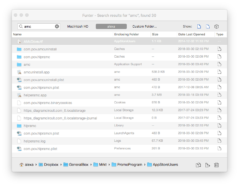

In this post, we are going to talk about the multiple ways to remove iCloud storage from both iOS and macOS, so that you don’t have to pay for additional iCloud storage and avoid those annoying pop-ups. Remove Plug-ins & Extensions on Edge, Chrome, IE, Firefox, etc. The first reason is iCloud’s unavailability on Android, and the competition such as OneDrive and Google Drive offer more bang for the buck with advanced functions. Besides, there are a couple of reasons to avoid using iCloud in favor of rivals.

A phishing scam has targeted Mac users by redirecting them from legitimate websites to fake websites which tell them that their computer is infected with a virus. Select Extensions tab > Find unwanted or suspicious extension that may be related with Advanced Mac Tuneup > Click Remove Tips In case you are unable to find or remove suspicious extension that may be related with threat, we recommend downloading Combo Cleaner Antivirus and see if it will find and clean up the threats for you.
Remove advaced mac cleaner how to#
And it’s very likely that you might fill-up space quicker than you anticipated.Īs a new user, you might get irritated by constant iCloud storage full prompts. How to avoid or remove Mac Defender malware in Mac OS X v10.6 or earlier Learn how to avoid or remove Mac Defender malware in Mac OS X v10.6 or earlier. Advanced Uninstaller PRO will automatically remove Skanect 1.9. All these options are switched on by default. Stylish and protective cases for Apple MacBook Air & Macbook Pro, with various. The case is worse in Apple’s scenario as the company uses the 5 GB storage to backup iPhone apps, Settings, and files. Removal guide for Safari, Google Chrome, Mozilla Firefox. Managing such an exotic cloud storage is nothing short of a chore.īy default, both Apple and Microsoft give the least amount of storage. Complete tutorial on how to remove Advanced Mac Cleaner extension from your browsers and Mac.
Remove advaced mac cleaner android#
The iPhone and Mac come with iCloud, Windows PCs integrate OneDrive, and Android prefers parent company’s Google Drive solution. Today, every operating system comes with a built-in cloud storage function to back up device settings, app data, photos, and files.


 0 kommentar(er)
0 kommentar(er)
